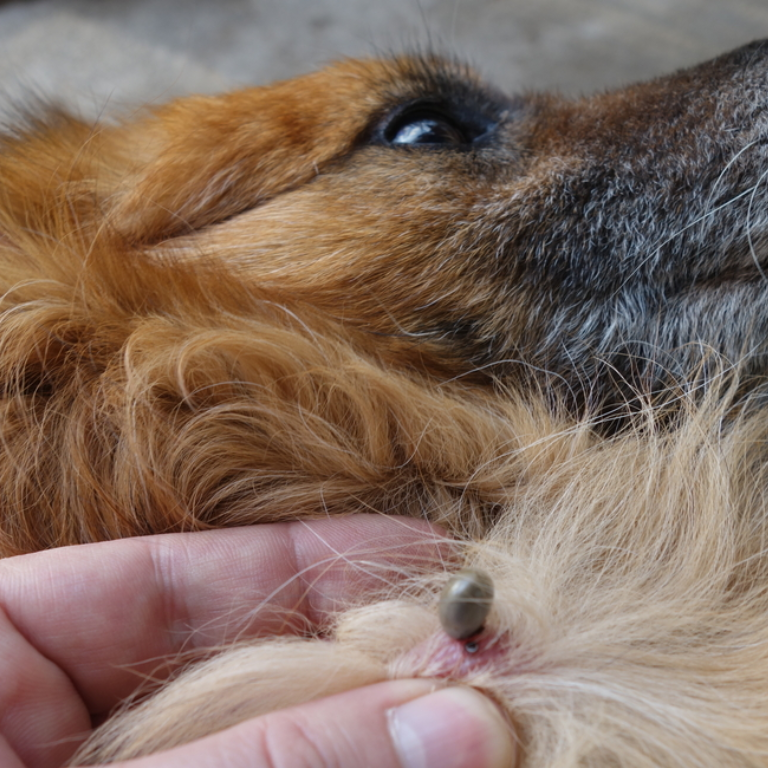Understanding the Risks of Tick Infestations

For pet owners, dealing with tick infestations in dogs is a common concern. But what exactly are ticks? These “obligate ectoparasites” thrive by spending their entire lifecycle on a host, posing a significant threat to pet health worldwide.
Dr. Lalit Kenjale and Dr. Aishwarya, veterinary officers at Wiggles, highlight that many infectious diseases affecting dogs stem from zoonotic pathogens transmitted by tick vectors. In India, Rhipicephalus and Haemaphysalis are among the most prevalent tick species.
Recognizing Symptoms of Tick Infestations and Tick Fever:
Ticks infest various areas in the household, eventually making their way onto a dog’s skin. Once attached, ticks multiply and transmit numerous protozoal infections through bites. Major symptoms include extensive erythrocytic lysis, leading to anemia, jaundice, and hemoglobinuria (hemoglobin in urine). These signs gradually worsen depending on the dog’s immune response.
Short-term symptoms include fever, lymph node swelling, spleen enlargement, and decreased platelet count. Additional signs encompass loss of appetite, depression, decreased stamina, reluctance to walk, limb or scrotal swelling, coughing, and breathing difficulties. Short-term cases are typically observed during warmer months when ticks are most active, with a low risk of fatality and spontaneous recovery.
Long-term Infections and Associated Symptoms:
Even after apparent recovery, dogs may develop long-term diseases, with symptoms varying based on affected organs. Complications may include spleen enlargement, kidney failure, lung, eye, brain, or spinal cord inflammation. Nervous system involvement can manifest as lack of coordination, depression, partial paralysis, and heightened sensitivity.
Other symptoms may entail severe weight loss, reduced platelet levels, leading to bleeding tendencies, nosebleeds, blood in urine or stool, and abnormal bruising.
Identification and Prevention:
Laboratory tests such as blood smear examination, blood tests, and PCR molecular diagnosis aid in identifying tick infections. Treatment typically involves antibiotics like tetracycline or doxycycline for tick fever. Anemia may necessitate blood transfusions or supportive fluid therapies.
Pet owners can prevent tick fever by:
Avoiding grassy and moist areas.
Using preventive medications like tick and flea spot-on treatments.
Promptly and properly removing any ticks found on their dog using tweezers.
By understanding tick-related risks, recognizing symptoms, and taking preventive measures, pet owners can safeguard their dogs’ health and well-being against tick-borne illnesses.





